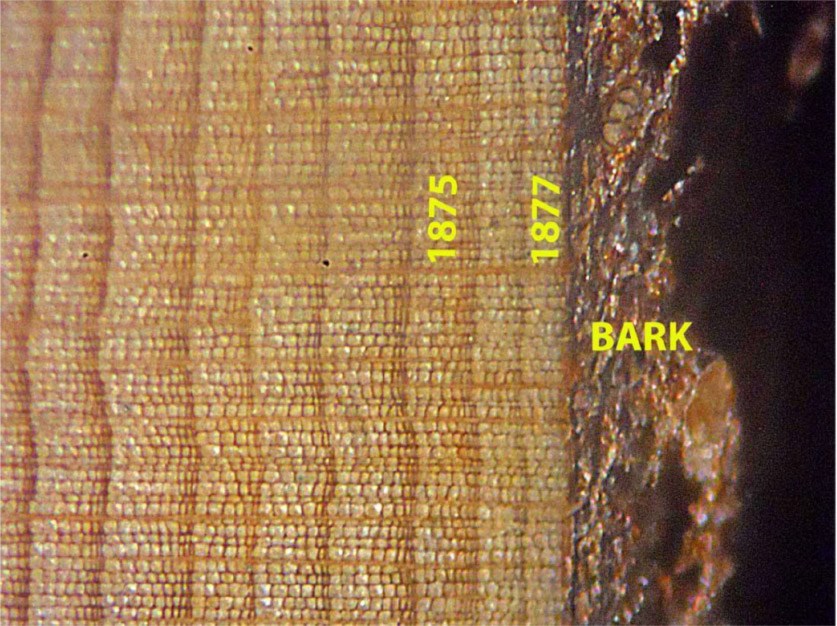Part of a series of articles titled Yellowstone Science - Volume 26 Issue 1: Archeology in Yellowstone.
Article
Dendrochronology - The Study of Tree Rings

Photo-©J. King
Dendrochronology: The Study of Tree Rings
by Dan Eakin & Elizabeth Horton
The science of dendrochronology can be used to estimate when a tree was felled or naturally died, if the calendar year dates of tree growth rings can be determined. A tree’s annual growth changes throughout the year in response to seasonal climate changes. At the beginning of each growing season, a layer of thin-walled cells called earlywood grow between the older wood and outer bark. As growth slows toward the end of summer, smaller, thicker-walled cells known as latewood are produced; and these usually appear darker in color in a tree cross-section. Combined with cells formed during the normal growing season, these two cell types compose one annual ring representing one year of growth. Tree growth is sensitive to fluctuations in atmospheric conditions, such as moisture, temperature, and sunlight. Broad rings reflect a good growing year, while narrow rings may reflect lower moisture, temperature, or other environmental stress.
Tree rings are important data banks when one considers that trees often live for hundreds of years and therefore, may contain a long record of environmental conditions. Matching tree ring width patterns in living and well-preserved dead trees can be correlated among different tree ring series and tree ring chronologies extending far beyond the range of living trees that can be constructed. This process, called crossdating, is the fundamental principle of dendrochronology and allows the precision necessary to help date archeological sites. It can even link these sites to specific events in history, such as the Flight of the Nez Perce in 1877.
Last updated: April 10, 2019
